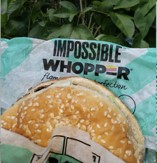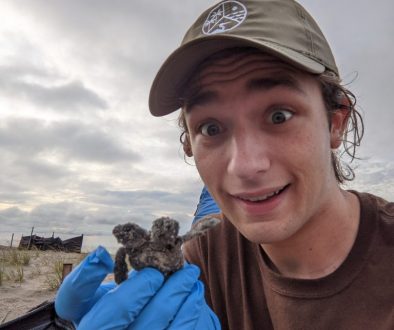Impossible Foods Inspires a Sustainable Food Revolution
Author: Sophie Spiegel
Ask any meat lover what it’s like to experience a truly great burger, and they will probably describe a mouthwatering first bite, starring a savory patty that’s perfectly tender and seeping with a distinctly meaty, juicy flavor, leaving the diner with an indulgent and satisfied feeling.
These are sensations that Dr. Patrick Brown, the founder of Impossible Foods Inc., and his team have been working relentlessly to achieve with their burger since 2011. The only catch is that their burger is entirely plant-based.
On July 3rd, the Medical University of South Carolina and the College of Charleston’s Center for Sustainable Development hosted a virtual Q&A featuring Dr. Brown to discuss his company’s role in the revolution of the food industry. Dr. Brown explained the food technology company’s mission is to attract the meat lovers’ business in order to disrupt the meat industry by 2035 and replace all animal food products with more sustainable, but arguably just as tasty, alternatives.
Dismantling the meat industry may sound extreme, but Dr. Brown asserts that it is a necessary change to address climate change and save our planet.
“The whole reason I got into this is that the use of animals to make food is by far the most destructive technology on the earth,” he said.
Today livestock covers 45% of the earth’s total land, and more space is needed to feed the demand of a rapidly growing population. To make more land available for growing feed crops and animal grazing, forests must be cleared, resulting in deforestation, loss of habitat, and a collapse in biodiversity. There are 60% fewer mammals, birds, reptiles, amphibians, and fish living on earth than forty-five years ago, a loss almost entirely due to the impact of animal agriculture on land and overfishing. Furthermore, animal agriculture is responsible for 20-30% of all freshwater consumption while also heavily contributing to the pollution by secreting harmful bacteria, chemicals, and antibiotics residue into waterways. And believe it or not, animal agriculture is responsible for four times the greenhouse gas emissions than the fuel produced by Exxon, BP, Shell Oil, and Chevron combined.
The multifaceted problem has a seemingly simple solution: eliminate meat from our diets to radically reduce the environmental footprint and improve personal health. But a major obstacle remains of convincing people to sacrifice such a staple in their diets.
“People do not like to give up the foods that they love, so that meant the only way to solve the problem was to compete in the marketplace – the most subversive institution on earth,” said Dr. Brown.
For the first two years, the company was entirely devoted to research to decipher the mystery of what makes meat taste like meat. The answer they found was heme. Often associated with a major component of blood called hemoglobin, the protein plays a key role in oxygen binding and transport in animal muscle tissue. Still, it can also be found in the root nodules of soybean plants. With this information, they harnessed the DNA of soybean plants and inserted it into a genetically engineered yeast for heme extraction. In addition to heme, ingredients include sunflower oil, coconut oil, soy amino acids, and vitamins, and methylcellulose, a carbohydrate used as a binding agent all to aid in the texture and taste of ground beef chosen as the first prototype because of its popularity presence in the American diet.
So, it’s better for the environment and scientifically proven to taste like meat, but the question remains, does it satiate a desire for the taste of meat enough to bring down a whole industry? During my first encounter with the impossible burger, I was so convinced of its resemblance to meat that I immediately spat it out and returned to the cashier counter, pointing out I had asked for the vegetarian option. Admittedly, I am a pescatarian, so I’m likely one of the more gullible taste testers. However, in a blind test conducted, more than 40% of participants preferred the Impossible Burger to the cow-based option. The company works daily to create new iterations of its product to improve flavor profiles and textures. With a bit more tinkering, they could capture even more of the meat market.
In light of the current COVID-19 pandemic, the meat industry has taken some hits operationally and economically. Because of the close-quartered working environment leading to many infected workers, Tyson and other meatpacking companies paused operations. As a result, there have been meat shortages and rising prices around the country. On April 28th President Trump issued an executive order with the hope of encouraging meat processing plants to stay open, despite mounting cases from these facilities causing meat production to slow.
Impossible has also had their fair share of challenges navigating the pandemic, although they just might come out the other side a stronger business. On the production side, they have had an easier time implementing safety measures than their meat factory counterparts because their employees are operating equipment in a less densely populated environment rather than crowded areas requiring hard manual labor. When the epidemic began, most of Impossible’s commercial focus was selling to restaurants; they took the time to support restaurants and help them sell their products. Recently, they have shifted their attention to launching their direct-to-consumer market available for purchase through their website as well as expanding their retail presence from 50 grocery stores primarily in New York and California to 5,000 stores and counting nationwide.
“Because of the disruption in the animal-based supply chain, I think a lot of customers that are highly habituated to sleepwalking into the grocery store and grabbing ground beef from the meat counter, suddenly have an incentive because of the supply issues to wake up and look elsewhere,” said Dr. Brown. “So, I think it’s going to have a long-term boosting effect on our business.”
Impossible is making strides towards achieving their goal of becoming part of the global protein supply. In anticipation of future growth, their research and development sector is working to diversify their protein toolkit to use other forms of protein besides soy, such as protein found in leaves to address concerns of monocropping and further push sustainability efforts. The company is putting the motions in gear to bring products to scale to make their product more affordable and accessible to customers. The team is also exploring new meat alternatives like ImpossibleTM sausage, which is now available at Burger King and Starbucks. With innovation and an appetite for sustainable change, the seemingly impossible is possible.



